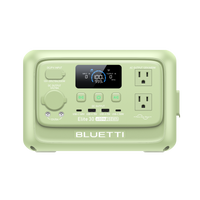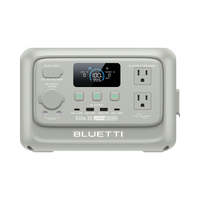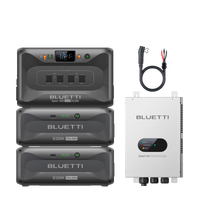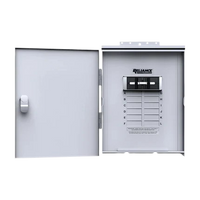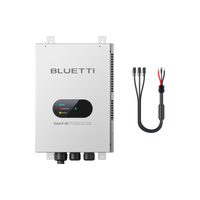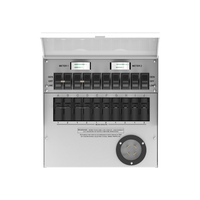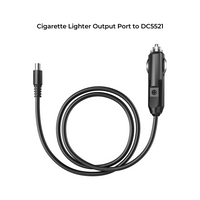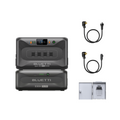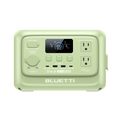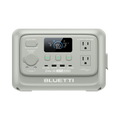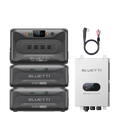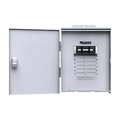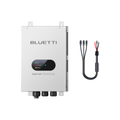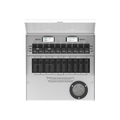Are you planning on installing a solar power system? Perhaps you’re changing your battery storage bank? Whatever the case, battery capacity is the most important thing you need to consider when buying a solar battery.
If you’re not connected to the utility grid, you need somewhere to store energy. Having dependable solar batteries will help you save the energy your solar panels generate during the day. But if you’re connected to the utility grid, the batteries will save enough energy to cushion you when grid shortages occur.
The battery size or capacity is the first important thing you should keep in mind when purchasing a solar battery. But what is battery capacity, by the way? How can you calculate a battery capacity?
Keep reading to find out more about this.
What is Battery Capacity?
Battery capacity is one of the most critical performance indicators to measure a battery’s performance. It indicates the power released by the battery under particular conditions (termination voltage, temperature, discharge rate, etc.).
Various batteries have different capacities, which are directly associated with the overall electrical power generated because of the chemical reactions in the battery cell.
The unit of battery capacity is ampere-hour (ah). That capacity differs based on the amount of active material stored within the battery. Hence, several batteries have different amounts of charge, depending on their applications.
Some release a huge amount of electrical power in short periods, while other batteries can offer endurance. A starter battery can discharge fast, a heavy-duty battery can deliver a long-term stable power supply, while a deep cycle battery has a long life.
The battery’s amp hour rating is identified by its capacity, power, and voltage. To determine the estimated time the battery will last, you must multiply its amp-hour (ah) rating by its battery capacity.
For example, if the battery’s capability is 7,000mAh, its amp hour rating is 50Ah. It will last for 350 hours (50 X 7,000 = 350 hours).
Why Do Some Batteries Have a Higher Capacity Than Others?

Like any other battery, the more energy it can store, the more stuff you can power. Indeed, there are other factors (such as chemistry and power rating), but in general, more and higher capacity means more devices powered for longer periods.
Using bigger home batteries mean you will have power for a longer time, especially when the grid is down. It can also prevent from buying electricity during peak, costly hours. You can spend more time pulling from the battery and possibly prevent the high-cost block completely.
That’s especially true if you charge the battery daily with solar panels. Increasing capacity is an excellent way to ensure you get maximum electricity savings from the storage system.
What’s more, high voltage batteries have a higher discharge platform. High voltage batteries are much lighter than standard batteries, which have the same capacity. Overall, the added voltage modestly enhances your appliance’s performance.
High voltage batteries also offer a high energy density. They can deliver more capacity under the same conditions of use. That also means they have a longer battery life while providing more power. Generally, the life of a high voltage battery will be increased by 15% to 25%. The battery’s energy density reflects the battery’s storage capacity unit per weight.
How Do You Calculate the Capacity of a Battery?
So how do you measure battery capacity? To do this, you must understand the battery’s voltage and the amount of time the battery can deliver power. Here, we will explain step-by-step how to calculate the battery’s capacity.
- Calculating total battery capacity
First, figure out the battery’s voltage. It’s often printed on the side part of the battery. Multiply that number by the number of cells in the battery. That will provide you with the total battery number in amp hours.
For instance, suppose you have a 12V-rated battery that has four cells. The total capacity of that battery is 48-amp hours.
- Calculating watt hours of a battery
Watt hours (Wh) measure your battery’s electrical storage capacity. It’s calculated by multiplying the number of amps a battery can store by its voltage.
For instance, let’s say you have a 12V battery with a capacity of 100Ah. It has a capacity of 1200Wh (12 X 100 = 1200Wh).
That measurement is essential, as it tells you how long the battery could power a certain device. For instance, a 1200Wh battery could power a 100-watt device for twelve hours, a 50-watt device for twenty-four hours, or a 25-watt device for forty-eight hours.
Also, the watt measurement is a way of comparing various batteries. For example, a 12-volt 100Ah battery features the same capacity as a 6-volt 200Ah battery. That’s mainly because they have the same watt hours (1200).
So, if you’re searching for batteries, compare the watt-hours first to get the one that fits your requirements.
On top of that, what is the amount of energy your battery can store. It is calculated by multiplying the number of amps with the battery voltage. For instance, a 12-volt battery with 100 Ah has a capacity of 1200Wh (12 X 100).
Differences Between Battery Capacity and Battery Life
As you use a battery and recharge it, it gradually loses the capability to go back to its original capacity. The battery’s lifecycle is the number of charge and discharge cycles it can complete before losing performance.
The concept that batteries have a life is familiar. You have probably experienced a dying phone battery with its charge draining typically at the most inconvenient time, and you might be curious how that impacts long-duration energy storage.
To completely understand battery life, let’s begin with some basics.
Battery basics
A battery stores energy in chemical form and converts it into electrical energy. Remember that battery life refers to three qualities: capacity, longevity, and performance.
Let’s discuss the semantics of such words a little further:
- Performance life is the battery’s run time on a full charge.
- Longevity refers to the number of charge cycles a battery could take before it no longer charges.
- Capacity indicates that a new battery can charge about 100%, but an older battery will charge about seventy percent.
For instance, Tesla Powerwall has a 10-year warranty at seventy percent capacity. Tesla acknowledges that the battery will lose thirty percent or more in capacity over time. Also, high DoD (depth of discharge) impacts battery capacity negatively.
Rechargeable batteries always have a finite life. Whenever you charge your phone, changes happen at the battery’s electrodes. Later, such changes will kill the battery, stopping it from charging or storing energy.
The impact of ‘depth of discharge’ on battery life
Remember that the number of times you charge a battery impacts its lifespan, but so does its depth of discharge (DoD). It refers to how much energy of the total battery capacity is drawn off at a time.
You may have obtained information about your phone telling you to recharge the battery before it dies. That’s because a 100% DoD stresses the battery and cuts its lifespan.
You can think of driving an older vehicle and letting the engine oil run out. You can drive for several hundred or thousand miles, but the engine will stop working eventually. A battery responds similarly.
Continuously drawing a high energy level per use interrupts the battery’s interior and impacts its performance.
The DoD becomes a crucial performance qualifier when you’re buying rechargeable batteries, particularly for solar power storage. You may notice battery labeling presenting a range of lifecycle options, like 1000 cycles at 75% DoD or 25000 cycles at 30% DoD.
Battery Capacity vs. Storage Capacity – Are They the Same?
Yes. Battery capacity and storage capacity are just the same. Battery capacity is the measure of the charge stored by the battery and is identified by the mass of active material included in the battery.
The battery capacity signifies the maximum amount of energy that could be extracted from the battery under specified conditions.
Nonetheless, the actual energy storage capabilities of the battery could differ from the normal rated capacity. Battery capacity depends on the battery’s history and age, the charging and discharging routines, and the temperature.
FAQs on Battery Capacity

Q: What is the unit of battery capacity?
The unit of battery capacity is normally expressed as ampere-hour (ah). Several batteries may have different voltages. When there are various voltage battery values, the battery capacity unit can’t be expressed by amp per hour. It should be used as the unit of battery capacity—work is equal to power multiplied by time.
Q: Can you increase battery capacity?
A battery’s capacity depends on the size and number of plates in a cell. If the plate’s size inside a cell is kept big, or if the number of plates kept is high, the battery capacity also increases.
Take note that batteries perform electric current internally through electrolysis. That process depends on electrodes. Increasing their size or number can increase the battery’s capacity. Also, the battery’s ability to store and provide energy will increase if the battery plates’ active ingredient is excessive, either in ion content or amount.
On top of that, battery capacity is dependent on electrolyte density. When a high-density electrolyte is in a battery, the battery capacity will also increase to a certain level. That process occurs as the electrodes can compete with electrolysis if an electrolyte is in the cell.
Remember that a high-density electrolyte guarantees an abundant supply of ions for conductance. Nonetheless, increasing density comes together with shorter battery life. The electrolyte density can’t be increased at will as the capacity would increase the expense of battery life.
Q: What factors impact battery capacity?
A few factors impact your battery capacity, including application, maintenance, ambient temperature, cycling, and battery chemistry.
- Application
The proper battery application for the given application is important. Concerns arise if the wrong battery is in use. For instance, UPS batteries are rated in watts per cell and offer high rates for a short time.
Meanwhile, telecom and switchgear batteries are rated in ampere-hours and made to run for longer, often four to eight hours.
A UPS battery installation in a telecom application will cause you to run the battery for longer than a standard UPS battery. That application can minimize battery life.
Take note that UPS batteries are made with more thin plates than standard batteries to accomplish a high discharge rate.
Discharging a UPS battery for hours will also cause electrode plates to deflect and overheat. Once the battery cools, it poses stress on the internal lead strap holding the plates altogether. In the end, that will cause your battery to fail prematurely.
- Maintenance
Irrespective of how good quality or expensive your battery is, it would fail if you did not maintain it. But remember that lithium-ion batteries are maintenance-free. With the increase in use times, the chemical components will fail, and the capacity will decay.
Keeping your battery in a cool and clean place and away from direct sunlight is important.
- Ambient temperature
A battery’s rated capacity depends on a temperature of 77 degrees Fahrenheit fixed ambient operating temperature. Any variation from that temperature can change its performance and shorten its life.
Ambient temperature can even lessen battery capacity and cause problems while charging and discharging, such as overheating and burnout.
- Cycling
Once a battery is at low capacity, it requires charging. That charging and discharging is called cycling.
- Battery chemistry
Due to the chemical make-up of batteries, their capability to provide and store power slowly lessens over time. Even when you follow all the proper maintenance and storage guidelines, you must replace them after a specific period.
Final Thoughts
It can be seen that improving the energy density of lithium batteries could be done by increasing the amount of negative and positive active substances, increasing the material’s specific capacity, increasing the operating voltage, and minimizing the battery’s weight.
As the technology behind high voltage batteries has grown over time, so has their safety rating. We believe that high-capacity batteries will become more common shortly. There you have it! Now, you understand the role of battery capacity and how the measure it. If you are looking for a high-capacity battery, Bluetii has got you covered. Check out our site and feel free to contact customer support if you have any questions.
Shop Bluetti for all your solar needs!














